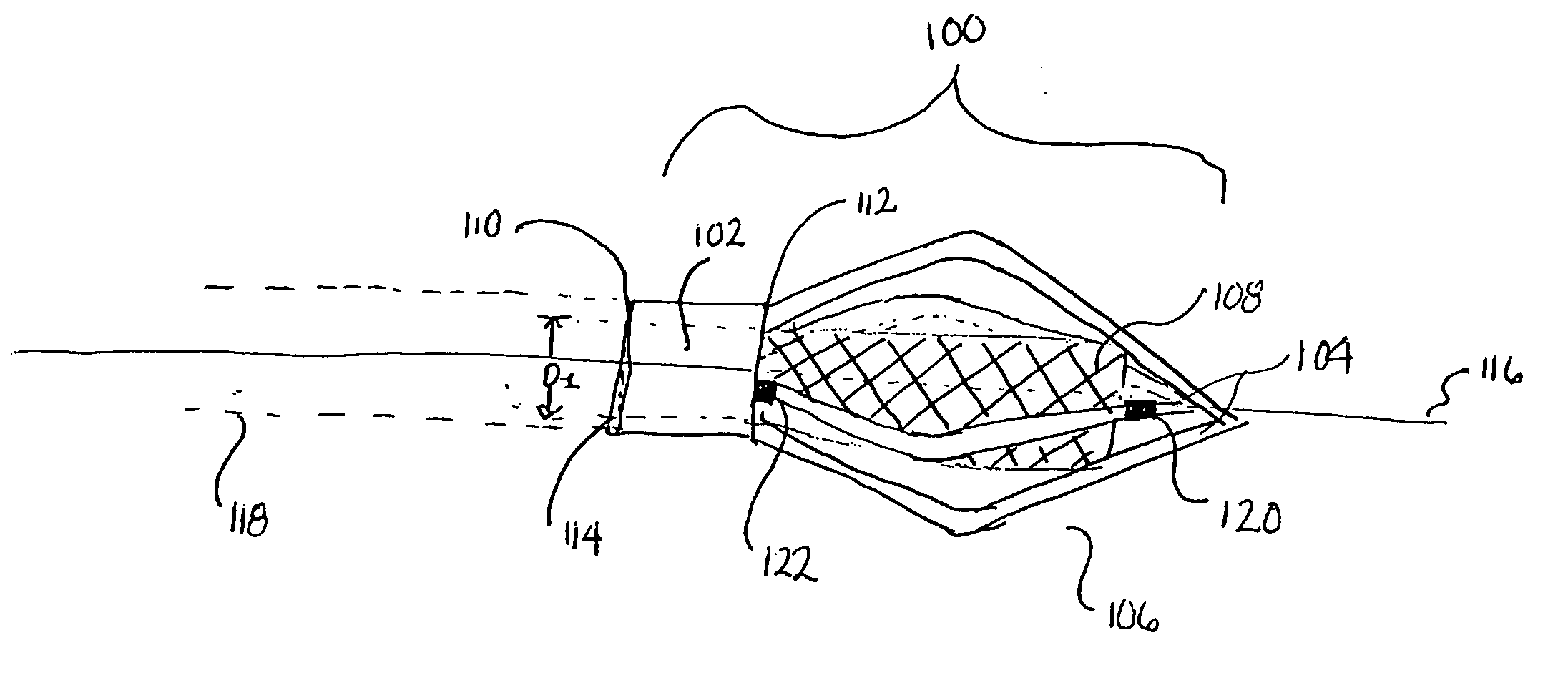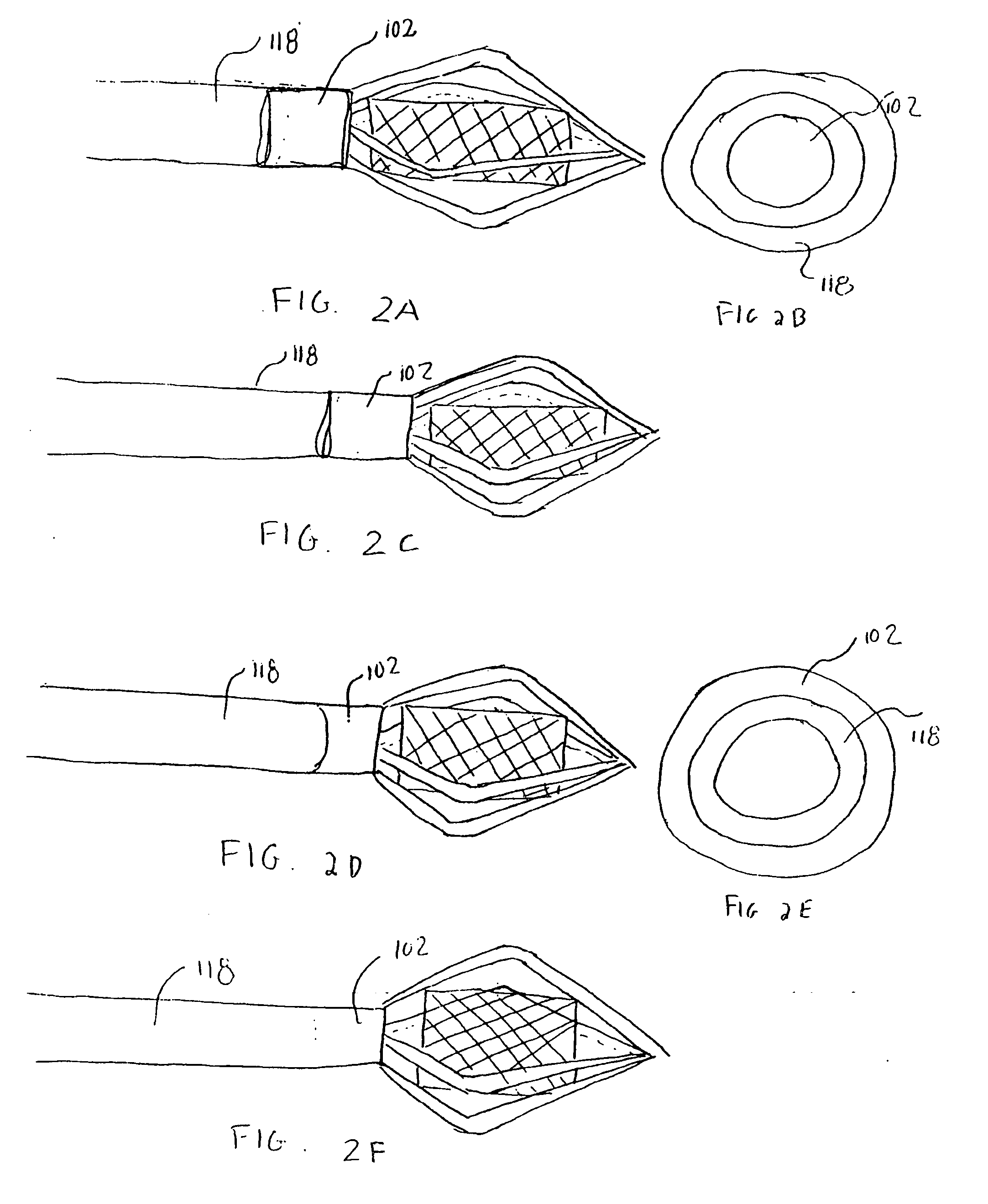Method and apparatus for caged stent delivery
a caged stent and stent technology, applied in the field of caged stent delivery, can solve the problems of inability to tightly crimp the stent, either on the balloon portion of the catheter, or onto its distal end, and no method exists that provides a caged stent delivery system, so as to reduce the exchange time, minimize friction, and restrict the effect of heating
- Summary
- Abstract
- Description
- Claims
- Application Information
AI Technical Summary
Benefits of technology
Problems solved by technology
Method used
Image
Examples
Embodiment Construction
[0033] Turning now to the drawings, wherein like numerals indicate like elements throughout the views, there is shown in FIG. 1 a device 100 for caged delivery of a stent or graft within a body lumen. Device 100 is used to deliver a stent to an intraluminal site and to controllably release it for expansion within a body lumen. The device comprises a tubular portion 102, a plurality of arms 104 attached to the distal end of tubular portion 102, and a mechanism to open the arms. Together, the arms 104 define cage 106 for containing stent 108 in a constricted form, having a smaller diameter, D1, than when deployed within a body cavity lumen, D2.
[0034] In operation, cage 106 carries stent 108, in its smaller diametric form to a preselected treatment site for deployment within a lumen of the body. Arms 104 are then opened, allowing the stent to be released from the cage. As described in greater detail below, the stent may be pushed from the cage to the treatment site, or the stent may s...
PUM
 Login to View More
Login to View More Abstract
Description
Claims
Application Information
 Login to View More
Login to View More - R&D
- Intellectual Property
- Life Sciences
- Materials
- Tech Scout
- Unparalleled Data Quality
- Higher Quality Content
- 60% Fewer Hallucinations
Browse by: Latest US Patents, China's latest patents, Technical Efficacy Thesaurus, Application Domain, Technology Topic, Popular Technical Reports.
© 2025 PatSnap. All rights reserved.Legal|Privacy policy|Modern Slavery Act Transparency Statement|Sitemap|About US| Contact US: help@patsnap.com



